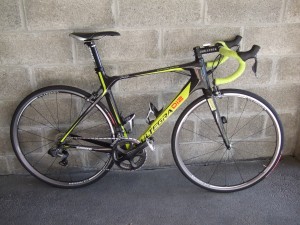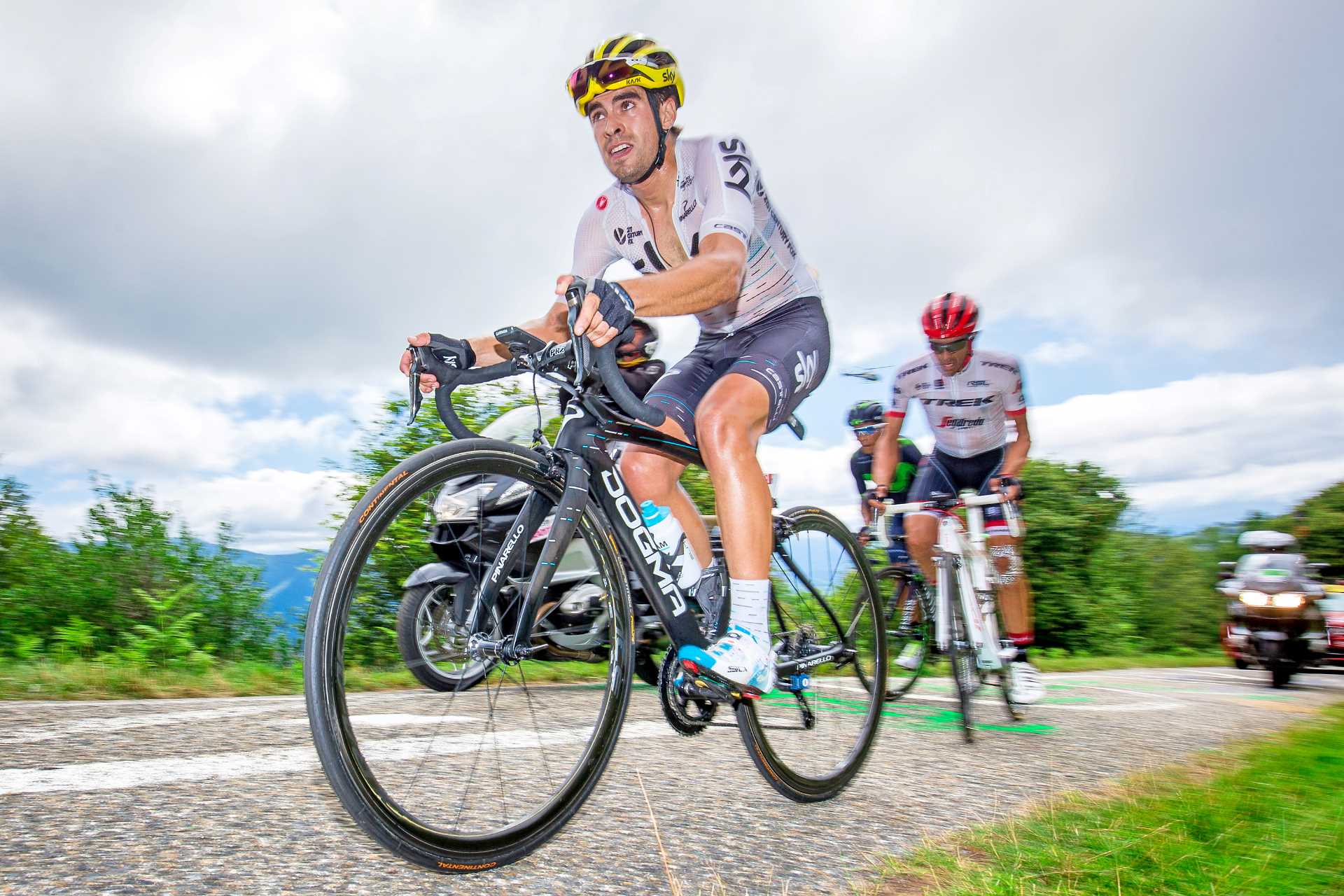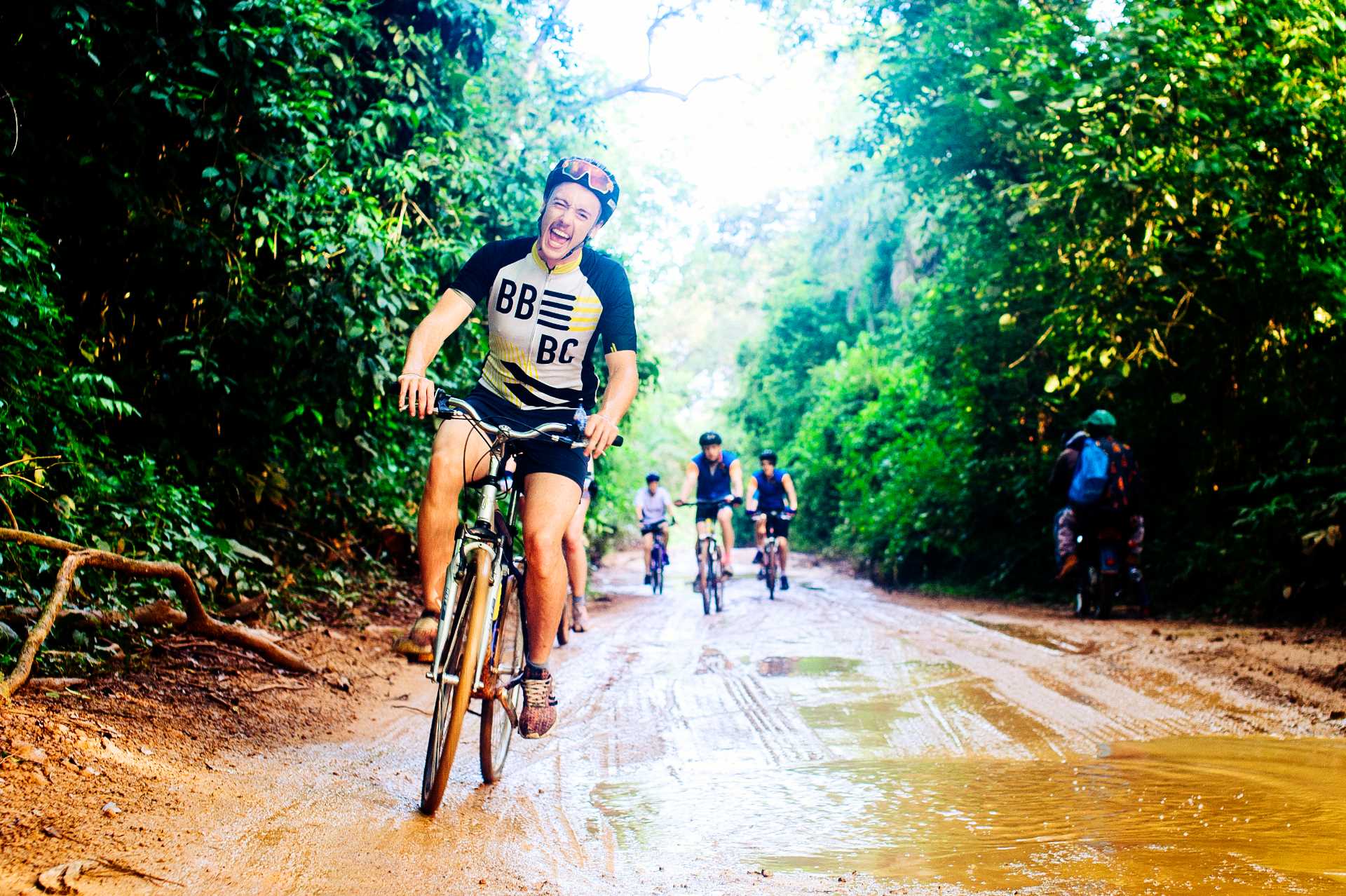
The venue chosen by Shimano for the recent press camp showcasing the Japanese manufacturer’s soon-to-be-released Ultegra Di2 electronic gear shifting groupset was the headquarters of the Union Cycliste Internationale at Aigle in Switzerland. Also known as the World Cycling Centre, the building was opened in 2002 and houses a 200m velodrome with accompanying facilities including workshop, lockable storage under the track for the use of individuals taking part in training courses and even a room entirely decorated in the manner of the interior of a Swiss chalet and constructed for the purpose of entertainment. Apparently every sizeable Swiss company has one…
The restaurant is good, serving suitably nutritious salads along with hefty pasta, rice and potato dishes replete with, in one case, “veal crumble”. Very tasty it was, too. There is, of course, a suite of offices, in one of which we assembled journos were treated to a series of addresses. The first was by UCI President Pat McQuaid, who provided among other points a well-reasoned and surprisingly convincing argument – to this opponent of the move at least – defending the abandonment of the kilo time trial and individual pursuit at the Olympics.
Less convincing, at least in parts, was a presentation by Technology Coordinator Julien Carron, who is in charge of, er, coordinating the UCI’s technical regulations. These, and especially those of them introduced in Y2K, are, or at least have been, widely criticised and even more widely ignored, the latter by parts of the cycle manufacturing industry and the former by almost anyone outside the UCI who has looked at them carefully.
The problem stems largely from the UCI’s desire to ensure that cyclists compete “on an equal footing”, which implies, as the regulations put it, “the primacy of man over machine”. In other words, it’s about athletic ability, not cycle technology. Or might be, had the UCI not permitted Francesco Moser’s 1984 hour record to stand despite having been set on a pair of disc wheels. The record he broke had been set 12 years earlier by Eddy Merckx riding a cycle pretty much indistinguishable in technological outlook from those used by previous holders such as Fausto Coppi, Jacques Anquetil and Ferdi Bracke.
Moser’s bike was different and, on the face of it, much faster thanks to the wheels. These were permitted on the slightly spurious grounds that the disc surfaces formed the structure of the wheel between rim and hub. The regulations at the time simply stated that no aerodynamic addition (in the form in this case of wheel covers) was permitted to the structure; the wheels had no additional cladding and passed.
And so it went on, with Greg LeMond’s use of aerobars to win the 1989 Tour de France accepted by cycling’s governing body as was Chris Boardman’s Lotus machine at the 1992 Olympics in Barcelona. This lead to an explosion of interest by adventurous manufacturers – and at least one lone genius in a shed in the case of Graeme Obree – in cycle aerodynamics. This culminated in what is now usually labelled the “absolute hour” record of 56.375km set by Chris Boardman in 1996 using Obree’s “Superman” position; enough was enough, and in 2000 the UCI downgraded every record since that of Merckx, introducing the “athlete’s hour” and requiring anyone wishing to beat his 49.431km to use a machine conforming to regulations designed to ensure it could offer no advantage. Boardman duly broke the record by 0.01km.
The regulations introduced in 2000 and since, which stemmed from the so-called Lugano Charter of 1996, govern such details as minimum cycle weight, the permissible shapes of frame tubes, the area in vertical projection in which the shape of a drop handlebar may be formed, the angle at which forearms must lie when using tri-bars (horizontal) and much more. Recently the UCI has stepped up efforts to control the development of cycle technology by obliging manufacturers to submit frames and forks for approval before they can be used in competition; a similar process for other components is under development.
Some governance of cycle technology would appear to be required if indeed cycle racing is to remain a test of cyclist and not machine. The regulations governing riding position are not so easily defended. After all, if one rider is able to adopt a more aerodynamic position than another of the same height and build, that surely should be part of the first rider’s armoury. And if a rider prefers to place his or her forearms at a tilt, why not? What business is it of the organisation to dictate forarm angle? It is hardly as if angled foreams are likely to be more aerodynamic and they don’t feature in the now-banned Superman position.

Perhaps most illogical, however, is the ICI’s insistence on a minimum saddle setback. Except for a couple of track sprint events, the nose of the saddle on a cycle used in UCI-sanctioned competition must lie at least 50mm behind a vertical line drawn through the bottom bracket axle. This may be reduced to zero mm for “morphological reasons”, or shortness of stature, at the discretion of the commissaire, but only provided the front of the knee cap does not sit in front of a vertical line through the pedal axle with the crank horizontal.
This, the fabled KNOPS concept, or KNee Over Pedal Spindle, has no real meaning. There is a marked absence of science relating to it, the best that has been done coming from mtb guru Keith Bontrager whose argument may be read on the late Sheldon Brown’s site. But what is the aim of the regulation? Presumably it is to prevent anyone riding with his or her knee in front of the pedal axle; hence the prohibition on even a shorter rider achieving such a position. If this is so, then it must surely be because the UCI believes riding forward of KNOPS to confer some sort of biomechanical advantage. If not, why bother regulating it?
Trouble is, very tall riders with long legs are permitted the same 50mm distance between the nose of the saddle and the BB axle centre. It is not to hard to see that a rider over about 6′ tall might comply with the rule and still ride forward of KNOPS. If it does convey a biomechanical advantage, then the tall rider is allowed to have one over a shorter rider.
Leaving aside the ludicrous sight of time triallists at the highest level riding on the nose of saddles cut short to permit them to be placed as far forward as possible without falling foul of the 50mm regulation, it is clear that the regulation itself cannot fit within the aim of making cycle racing an equal test of cyclists.
Worryingly, M. Carron was unable to acknowledge the difficulty. Me? Having measured several of my cycles, I find the nose of an average saddle – Selle Italia Turbo or San Marco Rolls – to sit 40mm behind the BB axle centre with my knee over the pedal axle. Time to apply for a special dispensation on the grounds of “morphological reasons”? Or just enjoy riding a bike that fits nicely?





